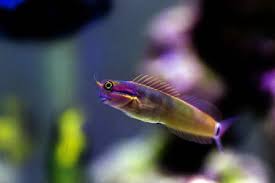Dragons and Their Influence on Chinese Rituals and Customs
The dragon (龙, Lóng) is one of the most powerful and enduring symbols in Chinese culture. Unlike the fire-breathing, destructive dragons of Western mythology, the Chinese dragon is a divine, benevolent creature associated with prosperity, strength, protection, and wisdom. Over thousands of years, dragons have played an essential role in Chinese rituals, ceremonies, and cultural customs, shaping both spiritual and social traditions.
From imperial ceremonies to village festivals, from wedding customs to funeral rites, dragons are deeply embedded in the fabric of Chinese society. Their presence in rituals, offerings, dance performances, and symbolic carvings reflects their profound influence on Chinese customs. This article explores the role of dragons in traditional Chinese ceremonies, their connection to seasonal festivals, and their enduring presence in modern cultural practices.
1. The Role of Dragons in Ancient Chinese Rituals
1.1. Dragons as Sacred Beings in Religious and Imperial Rites
In ancient China, dragons were seen as celestial beings that bridged the mortal world and the divine realm. They were believed to:
- Control natural elements such as rain, wind, and storms.
- Represent imperial authority, linking the emperor to heaven.
- Bring harmony to the balance of yin and yang in the universe.
Because of these divine connections, dragons were central to many imperial and religious rituals, particularly those involving:
- Prayers for rain and good harvests (求雨祭, Qiúyǔ Jì).
- Rituals honoring the heavens and ancestors.
- Coronation ceremonies, where emperors were referred to as “Sons of the Dragon” (龙子, Lóngzǐ).
1.2. Dragon Offerings in Ancient Temples
In Taoist and Buddhist traditions, temples dedicated to dragons were built across China, particularly near rivers, lakes, and mountains. People would bring:
- Gold and jade dragon statues as offerings.
- Silk banners with dragon motifs to invite blessings.
- Incense and food sacrifices to honor dragon deities.
One of the most famous rituals was held at the Temple of the Dragon King (龙王庙, Lóng Wáng Miào), where farmers and fishermen sought protection from storms and floods.
2. Dragons in Seasonal Festivals and Celebrations
2.1. The Dragon Dance (舞龙, Wǔ Lóng) – A Symbol of Prosperity and Power
The Dragon Dance is one of the most recognizable customs in Chinese festivals, especially during Lunar New Year and the Lantern Festival.
- The dragon is made of silk, bamboo, and paper, with dozens of performers controlling its movements.
- Dancers mimic the fluid, serpentine motions of a dragon, symbolizing strength, wisdom, and good fortune.
- The dance is often accompanied by loud drums, firecrackers, and gongs, meant to ward off evil spirits and attract positive energy.
The longer the dragon, the greater the blessings. Some performances feature dragons over 100 meters long, reflecting the community’s collective hope for success and prosperity.
2.2. Dragon Boat Festival (端午节, Duānwǔ Jié) – Honoring the Spirit of the Dragon
The Dragon Boat Festival, held on the 5th day of the 5th lunar month, is another event deeply connected to dragon mythology.
- Originating from the legend of Qu Yuan, a loyal poet who drowned himself in a river, the festival evolved into a ritual to honor water dragons.
- Dragon boat races symbolize the power and speed of dragons, as rowers paddle to the beat of drums, mimicking the movements of a dragon.
- People offer rice dumplings (粽子, Zòngzi) to the river dragons, believing that these creatures will protect fishermen and ensure calm waters.
The festival reflects the belief that dragons govern the rivers and seas, requiring both respect and celebration.
3. Dragons in Chinese Wedding and Birth Rituals
3.1. The Dragon and Phoenix Symbol in Marriage
In Chinese tradition, marriages are often blessed by the dragon (龙) and the phoenix (凤, Fèng).
- The dragon represents the groom, symbolizing strength, power, and masculinity.
- The phoenix represents the bride, symbolizing grace, beauty, and femininity.
- Wedding decorations often feature golden dragon and phoenix motifs, signifying harmony, prosperity, and balance in the marriage.
During traditional weddings, couples drink from goblets linked by a dragon and phoenix engraving, a ritual meant to ensure lifelong unity.
3.2. Dragons in Birth Celebrations and Naming Rituals
Newborns born in the Year of the Dragon (龙年, Lóng Nián) are considered especially fortunate, powerful, and destined for greatness.
- Many families name their children after dragons, using characters like 龙 (Lóng) in names to bring luck and success.
- Red dragon banners are displayed outside homes to ward off evil spirits and bless the child’s future.
- Some families perform a “Dragon Blessing Ceremony,” where a Taoist priest chants prayers for the newborn’s strength and longevity.
These traditions show how the dragon is not just a mythical figure, but a vital part of family customs.
4. Dragons in Funeral and Ancestral Worship Customs
4.1. The Dragon Bridge to the Afterlife
In Chinese funerary beliefs, dragons are seen as guides that lead souls to the afterlife.
- Some burial sites are chosen based on Feng Shui, ensuring that the “dragon vein” (龙脉, Lóng Mài) aligns properly for the deceased to find peace.
- Dragon carvings appear on ancestral tombs, signifying the soul’s safe passage to heaven.
- The Dragon Bridge (龙桥, Lóng Qiáo) in many temples represents the link between the mortal world and the spiritual realm.
4.2. Dragons in Ancestral Worship and Offerings
During Qingming Festival (清明节, Qīngmíng Jié), families offer food and incense to dragon deities, believing that they will deliver blessings from ancestors.
- Some families burn dragon-shaped incense sticks, symbolizing a request for protection from ancestral spirits.
- Dragon statues are placed in family shrines, reinforcing the belief that ancestral spirits are guarded by these powerful beings.
These customs highlight the dragon’s enduring role in both life and death rituals.
5. The Dragon’s Influence in Modern Chinese Customs
5.1. The Dragon as a National Symbol
Today, the dragon remains a cultural emblem of China, appearing in:
- State ceremonies, including the Olympics and National Day parades.
- Business names and brands, as a symbol of power and prestige.
- Political rhetoric, with China often referred to as “The Dragon of the East”.
5.2. The Dragon’s Role in Lunar New Year Celebrations
During Lunar New Year, dragon decorations fill homes, streets, and temples, symbolizing good fortune and protection.
- Golden dragon charms are worn for luck and strength.
- Families place dragon paintings in their homes, inviting prosperity and success for the year ahead.
- Dragon parades are held in every major city, keeping the ancient traditions alive in modern society.
Conclusion
Dragons have shaped Chinese rituals, customs, and beliefs for thousands of years. Their presence in religious ceremonies, seasonal festivals, family traditions, and modern celebrations reflects their powerful influence on Chinese culture.
Whether as divine protectors, symbols of prosperity, or spiritual guides, dragons continue to play a sacred role in the lives of the Chinese people, preserving their significance in both ancient and contemporary customs.


